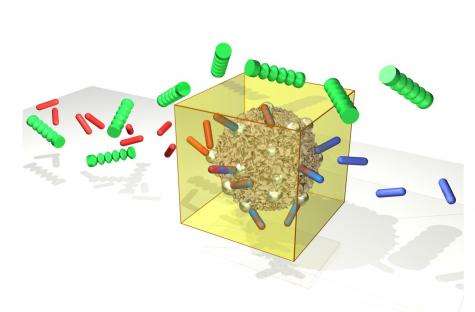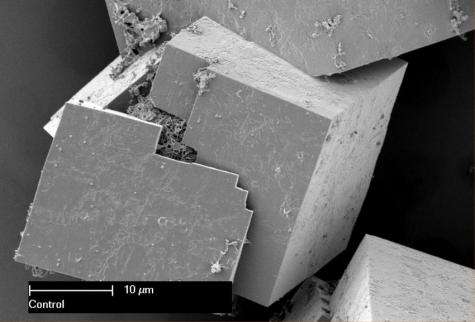'Seeding' the next generation of smart materials

(�鶹��ԺOrg.com) -- Scientists at CSIRO have developed a simple but effective technique for growing and adding value to an exciting new group of smart materials which could be used in areas such as optical sensing and drug storage and delivery.
Working with a team of international collaborators, Dr Paolo Falcaro and Dr Dario Buso from CSIRO’s Future Manufacturing Flagship have developed a revolutionary way to control the growth, and provide additional functionality, to a family of smart materials known as metal-organic frameworks, or MOFs.
MOFs consist of well-ordered ultra-porous crystals which form multi-dimensional structures with enormous surface areas. One gram of the material can have the surface area of more than three football fields.
Their spacious pores provide MOFs with the potential to be used as ‘sponges’ for storing gases such as hydrogen, carbon dioxide or natural gas. They could also be used as nano-sized sieves to purify gases or liquids, for catalysis, or for the targeted transport of drugs in the body.
A paper on the research has been published in the latest edition of the scientific journal, Nature Communications.
According to Dr Buso, although MOFs have many potential practical applications, they are hard to control and slow to grow.

“To address these problems, we have developed a new technique known as seeding which allows the user to have complete control over where and how the MOF crystals grow. Additionally the seeding technique greatly speeds up the growth process.
“We have discovered that the MOF crystals grow in a completely ordered and predictable way once we introduce ceramic spherical microparticles – known as seeds – into the MOF solution. In effect the seeds ‘fix’ the MOF crystals to the surface. So by controlling the placement of the seeds we can control how and where the MOFs grow – even on complex three-dimensional surfaces.
“Not only that, but the addition of the seeds enables the MOF crystals to form three times faster than the conventional way,” Dr Bruso said.
Dr Falcaro said that not only do the seeds allow his colleagues to control the growth of the MOF crystals they also allow them to build additional functionality right inside the MOF structures.
“To fully exploit the flexibility of MOFs we wanted to see if we could give the material additional properties using our new technique,” Dr Falcaro said. “We were excited to find that it was relatively straightforward to embed active nanoparticles into the seed and then embed the seed inside the MOF.
“For example, we have found that we can add nanoparticles to the seed which make MOF magnetic, luminescent, catalytic, photochromic – all without compromising the quality of the MOF structure. In effect we have developed a new class of adaptive MOF composites made up of a functional core surrounded by an ultra-porous framework.”
More information:
Provided by CSIRO




















